Total Knee Replacement Pain at Night
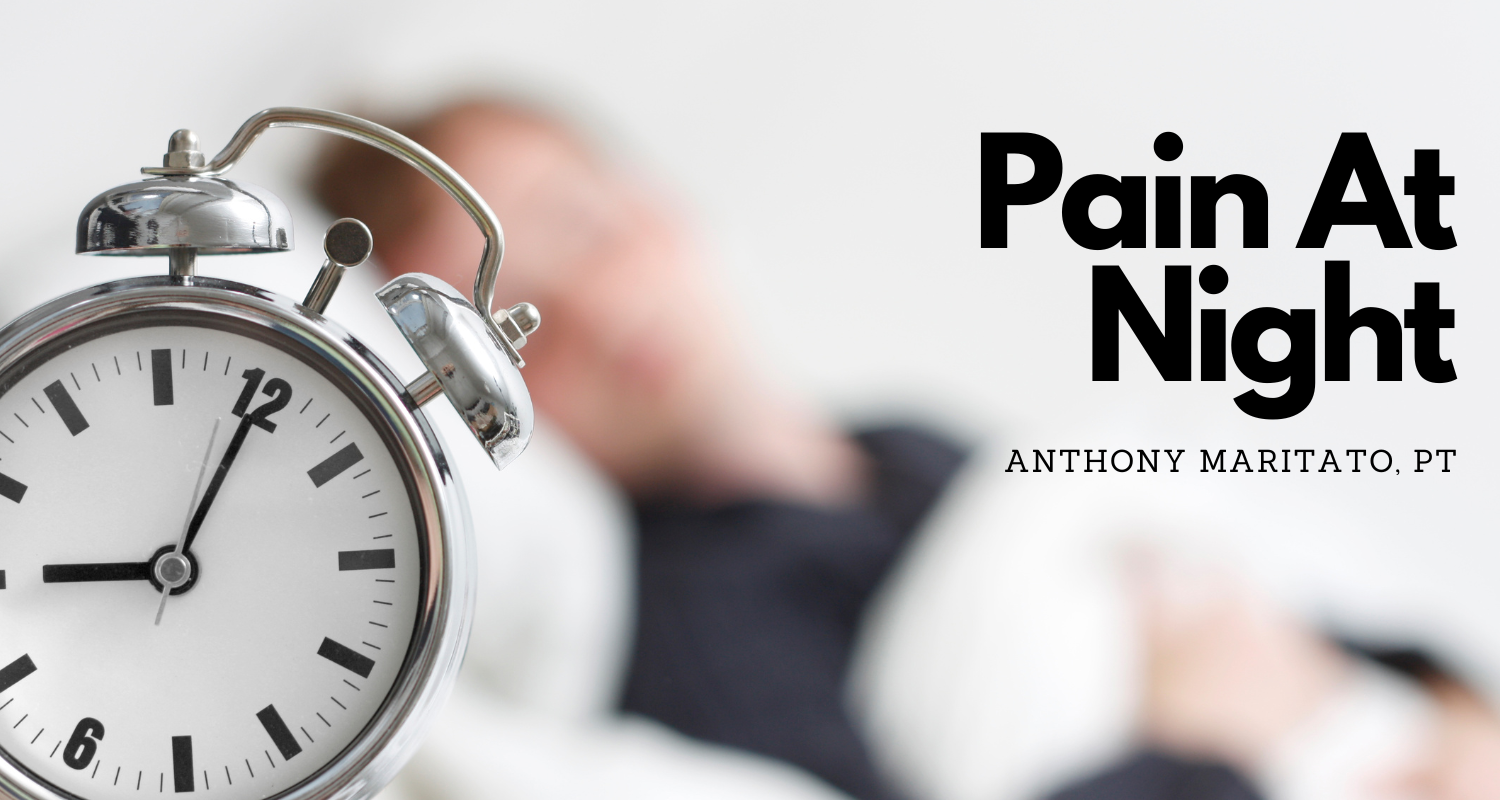
What to Expect
Explore our comprehensive guide on managing ‘Total Knee Replacement Pain at Night.’ Learn about the causes of night pain, effective pain management strategies, best sleeping positions, and more. This article provides practical advice to help individuals navigate the challenges of sleep and pain after knee replacement surgery, promoting a smoother recovery process.
Table of Contents
- Introduction
- Causes of Pain at Night After Total Knee Replacement
- Managing Pain After Knee Replacement Surgery
- Best Sleeping Positions After Knee Replacement
- Positions to Avoid After Knee Replacement Surgery
- Night Pain and Other Symptoms
- Improvement of Sleep Quality After Surgery
- Common Misconceptions and FAQs
- The Importance of Sleep for Healing
- Contacting a Doctor for Sleep Difficulties
- Expectations for Sleep and Pain Over Time
- Conclusion
1. Introduction
Total knee replacement surgery is a common procedure that can greatly improve the quality of life for individuals with severe knee pain. However, managing pain, particularly at night, and ensuring quality sleep after the surgery can be challenging. This article aims to provide practical advice and information to help individuals navigate these challenges.
Understanding the causes of increased pain at night, effective pain management strategies, and the best sleeping positions can make a significant difference in the recovery process. Let’s delve into these topics.
2. Causes of Pain at Night After Total Knee Replacement
After undergoing a total knee replacement, it’s common for patients to experience increased pain during the night. One of the primary reasons for this is the body’s decreased production of endorphins and enkephalins, natural painkillers, during the night. This can result in heightened sensitivity to pain.
Additionally, the lack of distractions that are usually present during the day can make individuals more aware of their pain. Understanding these factors can help patients better manage their pain and set realistic expectations for their recovery process.
3. Managing Pain After Knee Replacement Surgery
There are several strategies that can help manage pain after knee replacement surgery. Applying ice to the knee before bed can help numb the joint and relieve pain. It’s also advisable to limit liquid intake before bed to reduce the need for bathroom trips during the night, which can disrupt sleep and cause discomfort.
If pain medication has been prescribed, taking it an hour before sleeping can help manage pain throughout the night. However, it’s important to follow the prescribing doctor’s instructions regarding the use of pain medication.
4. Best Sleeping Positions After Knee Replacement
One of the best ways to sleep after knee replacement surgery is on your back. This position makes it easy to keep the leg straight, which promotes proper blood flow and supports the healing process. To ensure the knee is getting the proper support, it’s beneficial to prop up the leg with pillows, ensuring the pillow is underneath the length of the knee and calf to avoid bending it.
Another position you can sleep in is on your side, but in a specific way. It’s recommended to sleep so that your operating side faces the ceiling, keeping the pressure off the knee you had surgery on. Placing a pillow or a few between your knees can provide greater support and comfort.
5. Positions to Avoid After Knee Replacement Surgery
While finding a comfortable sleeping position after knee replacement surgery is important, it’s equally crucial to know which positions to avoid. Sleeping on the stomach, for instance, should be avoided as it puts excessive pressure on the knee, potentially irritating the surgical site and hindering the healing process.
Additionally, it’s important to avoid placing pillows behind the knee that was operated on. While it might seem comfortable, having a pillow under the knee can cause it to bend, making healing more difficult and potentially upsetting the surgical site.
6. Night Pain and Other Symptoms
Experiencing pain at night after a total knee replacement surgery can sometimes be associated with other symptoms or conditions. For instance, some patients may also experience neuropathic pain or depressive disorders. These conditions can affect the patient’s overall recovery and quality of life after surgery.
Understanding the correlation between night pain and these other symptoms can help patients and their healthcare providers develop a more comprehensive and effective pain management and recovery plan.
7. Improvement of Sleep Quality After Surgery
While the initial post-surgery period can be challenging, it’s important to note that sleep quality typically improves over time after a total knee replacement. The body gradually adjusts to the changes, and as the healing process progresses, the pain levels usually decrease, leading to better sleep.
Various studies and data show a typical timeline for sleep improvement after surgery. However, it’s important to remember that each individual’s recovery process is unique, and some may experience improvements sooner or later than others.
8. Common Misconceptions and FAQs
There are several misconceptions about pain and sleep after knee replacement surgery. For instance, some people might believe that severe pain will persist indefinitely or that sleep disturbances are a permanent problem. Addressing these misconceptions can help set realistic expectations and reduce anxiety related to the recovery process.
Additionally, providing answers to frequently asked questions about the topic can be a valuable resource for patients. This could include questions about the typical duration of pain, effective pain management strategies, and the expected timeline for returning to normal sleep patterns.
9. The Importance of Sleep for Healing
Sleep plays a crucial role in the healing process after a total knee replacement surgery. During sleep, the body focuses on growing new tissue and restoring health, which is essential for recovery. Lack of quality sleep can hinder this process and prolong the recovery period.
Understanding the importance of sleep for healing can help patients prioritize good sleep hygiene and take steps to improve their sleep quality. This could include following the recommended sleeping positions, managing pain effectively, and maintaining a regular sleep schedule.
10. Contacting a Doctor for Sleep Difficulties
If a patient finds it extremely difficult to sleep after surgery, it’s important to contact a doctor or pain management specialist. Poor sleep can slow the recovery process, increase the risk of accidents, and potentially affect the final outcome of the surgery. Therefore, any significant sleep disturbances should be discussed with a healthcare professional.
Doctors can provide personalized advice and may adjust the pain management plan or suggest other strategies to improve sleep. Remember, each patient’s situation is unique, and what works for one person may not work for another.
11. Expectations for Sleep and Pain Over Time
After a total knee replacement surgery, it’s normal for patients to experience changes in their sleep patterns and pain levels. However, it’s important to note that these changes are typically temporary. As the body heals, pain levels generally decrease, and sleep quality improves.
Setting realistic expectations for sleep and pain over time can help patients cope better with the recovery process. It’s also important to remember that recovery takes time, and patience is key. With proper care and management, most patients can look forward to significant improvements in their quality of life.
12. Conclusion
Managing pain at night and ensuring quality sleep after a total knee replacement surgery can be challenging, but with the right information and strategies, it’s entirely possible. From understanding the causes of night pain to learning effective pain management techniques and the best sleeping positions, patients can take active steps towards a smoother recovery.
Remember, every patient’s recovery journey is unique. It’s important to stay patient, follow the advice of healthcare professionals, and take care of one’s overall health. With time, the pain will lessen, sleep will improve, and the benefits of the surgery will become increasingly apparent.

Anthony Maritato, PT
Physical Therapist
Anthony Maritato, PT has been a licensed physical therapist and private practice owner since 2006. Ohio license #PT011602.
Anthony has been passionate about helping patients recover from total knee replacement surgery as well as rotator cuff repair surgery.

Is a recumbent bike good for knee replacement?
Riding a recumbent bike after a total knee replacement can be a great way to increase range of motion, increase cardiorespiratory fitness, and improve overall well being. In this video I explain some tips and tricks we use in the clinic to help clients maximize the benefit of riding this bike.
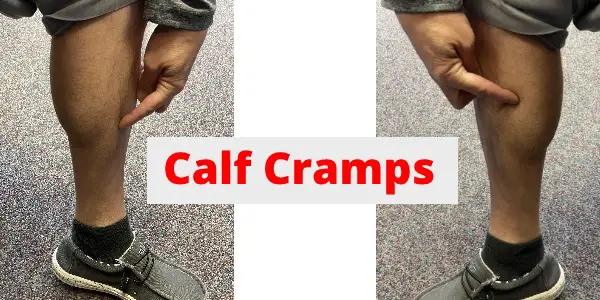
Calf Cramps How to STOP Calf Cramps
How to Stop Calf Cramps at Night When They are Happening One of the must frustrating times to get a calf cramp is in the middle of the night. You may be sound asleep when all of a sudden you experience this intense shooting pain which causes you to draw up in writhing...
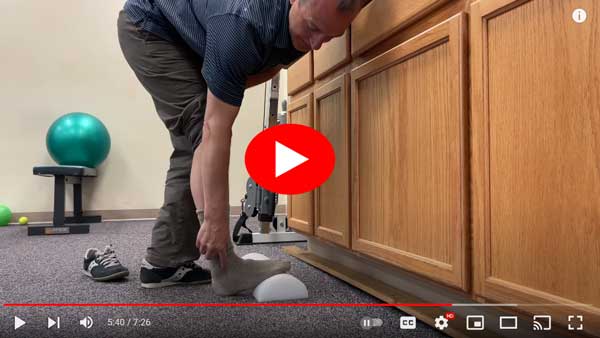
3 TIPS to STOP Ankle Pain After Knee Replacement Surgery
Ankle pain after total knee replacement surgery is very common. Osteoarthritis of the knee causes the knee to change shape over time. The knee replacement surgery will correct any malalignment of the knee, but it causes excessive stress on the ankle and hip. In this...
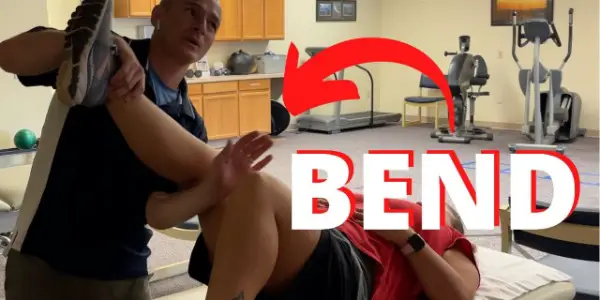
Is a Manipulation Under Anesthesia MUA Painful
No, during a manipulation under anesthresia after a total knee replacement you will be placed under sedation and the procedure is painless. During the following 24 to 48-hours you may feel some increased soreness and swelling, but very few patients actually reqort...
Recovery After MUA Manipulation Under Anesthesia [VIDEO]
Video SeriesAnthony Maritato, PT has been a licensed physical therapist and private practice owner since 2006. Ohio license #PT011602. Anthony has been passionate about helping patients recover from total knee replacement surgery as well as rotator cuff repair surgery.

Hip and Groin Pain After Total Knee Replacement Surgery
I couldn't find peer-reviewed data to support an answer to this question, but as a physical therapist with 20 years of history in the clinic, I can tell you that anterior hip and groin pain after a total knee replacement is not uncommon. As of writing this article on...

How Painful Is A Total Knee Replacement
How long does the pain last after a knee replacement? * How bad is the pain after knee replacement surgery? * Why is a knee replacement so painful? * What helps pain after a total knee replacement?

2 Reasons why your knee replacement sounds like Velcro tearing!
The two reasons why your total knee replacement sounds like Velcro tearing when standing up from a chair or walking downstairs are because the underside of your patella is rubbing against the bottom of your femur or you are experiencing the sensation of scar tissue...

When can I switch from a walker to a cane?
Between 10 and 14 days after total knee replacement surgery, most patients have switched from a walker to a cane. Of course, some patients never use a cane and just progress from the walker to no assistive device after a couple of days, while other patients depend on...
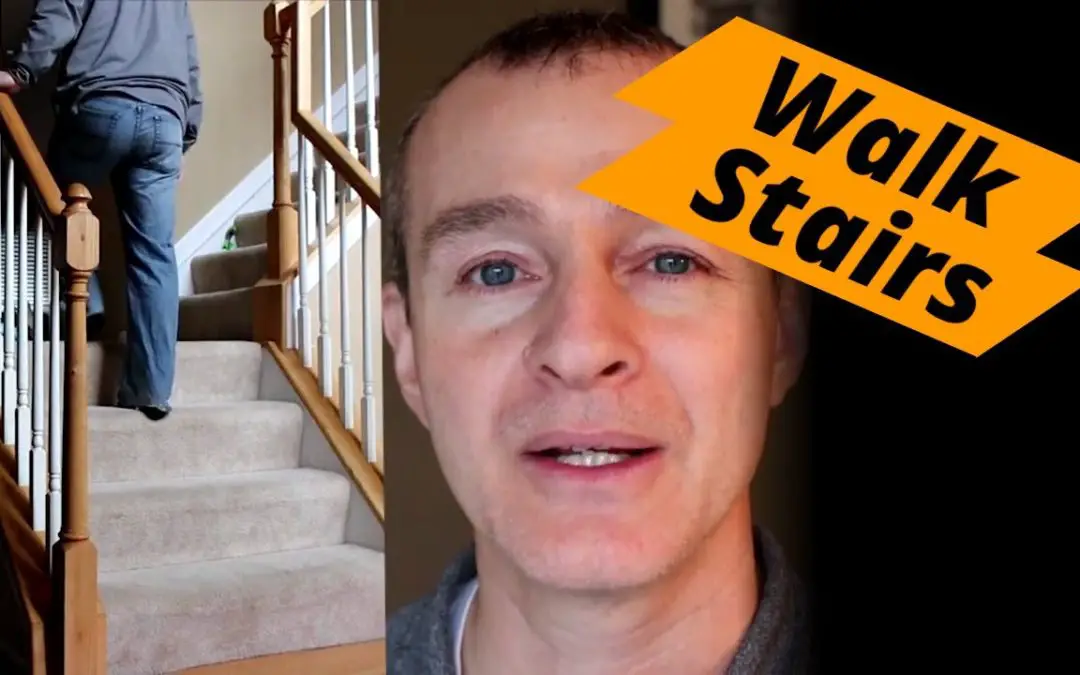
When can I walk upstairs normally after TKR?
Article Updated: 09/02/2023Walking Upstairs Post-Op Throughout my extensive career as a physical therapist specializing in total knee replacements, I've observed a consistent pattern: the 10-week post-operative mark often serves as a significant milestone for...